¶ GPIO
GPIO, full name: General Purpose Input/Output, is a general-purpose pin that can be dynamically configured and controlled during software operation. On the RK platform, except for some pins with specialized purposes (such as DDR, MIPI, etc.), other pins, if not configured for reuse, default reuse status is GPIO. RK's GPIO driver provides the standard GPIO interface for Linux. There is a set of sysfs nodes in Linux that operate GPIO in user mode. The application layer mainly implements GPIO programming by manipulating these nodes.
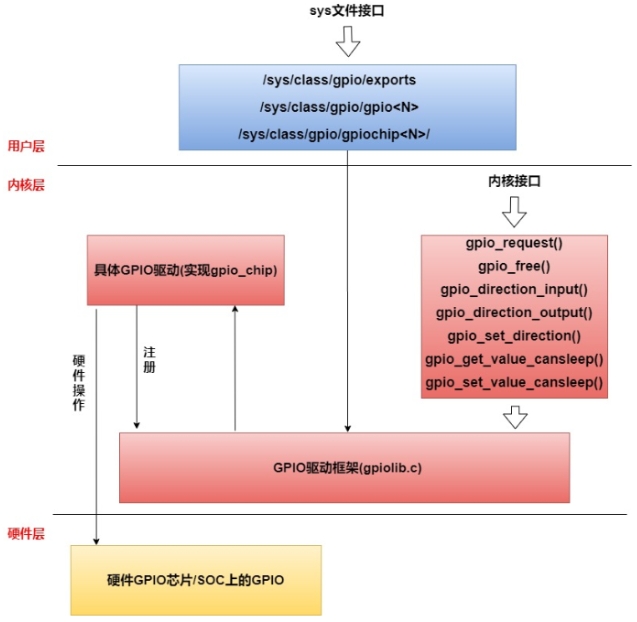
YY3568 is connected to two LED lights, namely GPIO3-A4 and GPIO02-B2, as shown in the following figure:

Under the general Linux framework, all GPIO are numbered with numbers. For chips on the RK platform, the numbering calculation method is: (gpio controller number -0) * 32+(port number -'A ') * 8+index number. The controller number of GPO3-A4 is 3, the port number is A, and the index number is 4, so the numbering is (3-0) 32+08+4=100
¶ Command line operation GPIO
Set GPIO 100 to user mode operation
echo 100 > /sys/class/gpio/export
Set GPIO 100 as output
echo out > /sys/class/gpio/gpio100/direction
Set the voltage level with GPIO 100 as the output
High level
echo 1 > /sys/class/gpio/gpio100/value
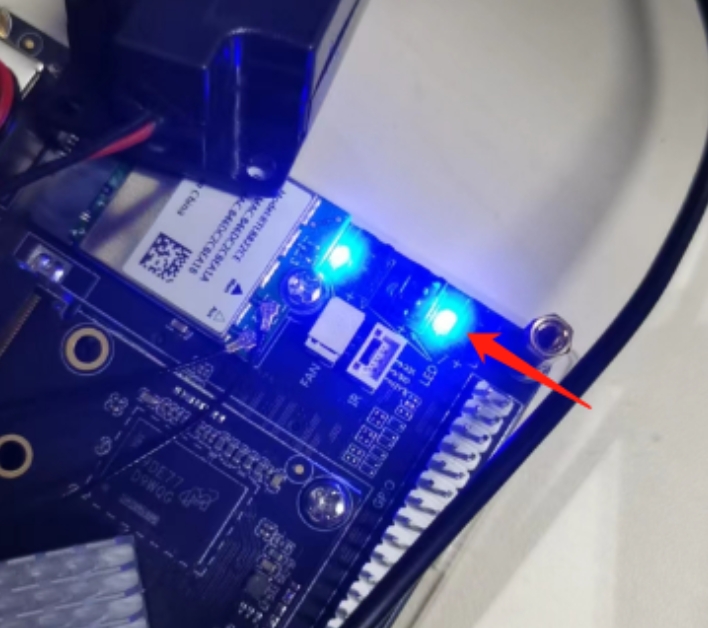
Low level
echo 0 > /sys/class/gpio/gpio100/value
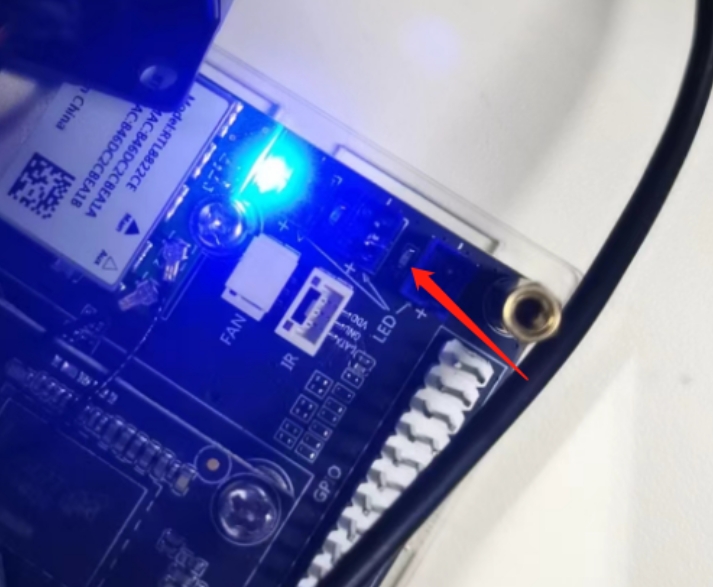
Set GPIO 100 as input
echo in > /sys/class/gpio/gpio100/direction
When GPIO 100 is used as the input, read its voltage level, where 1 is high and 0 is low
cat sys/class/gpio/gpio100/value
Cancel GPIO 100 user mode operation
echo 100 > /sys/class/gpio/unexport
¶ USB
- Mount the USB drive onto the system via USB, as follows:


# mkdir /mnt/usb
# mount /dev/block/sda2 /mnt/youyeetoo
# cd /mnt/usb
# ls
- Execution effect:

¶ UART
- The YY3568 development board has 5 UART interfaces, namely UART 2, UART 3, UART 4, UART 8, and UART 9.
- UART2 is the debugging serial port of the board, with a baud rate of 1500000. The tx pin of the serial module is connected to the rx pin of the development board, and the rx pin of the serial module is connected to the tx pin of the development board. Connect the GND of the serial module to the GND of the board (GND must be connected).
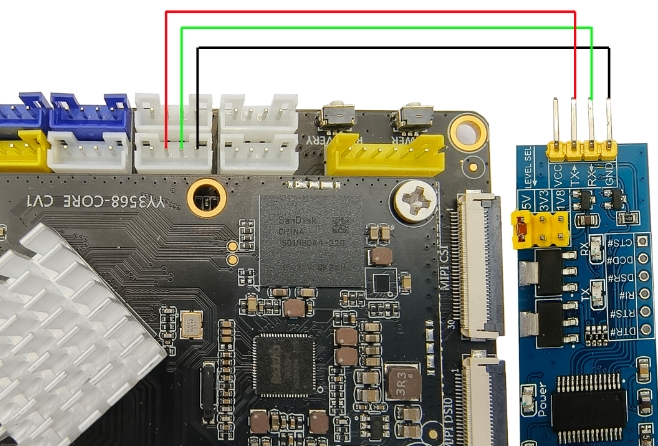
- To view existing serial devices in the serial terminal, execute the following command:
ls /dev/ttyS*

- Open the SSCOM tool on Windows and connect the serial port of the USB to TTL module:
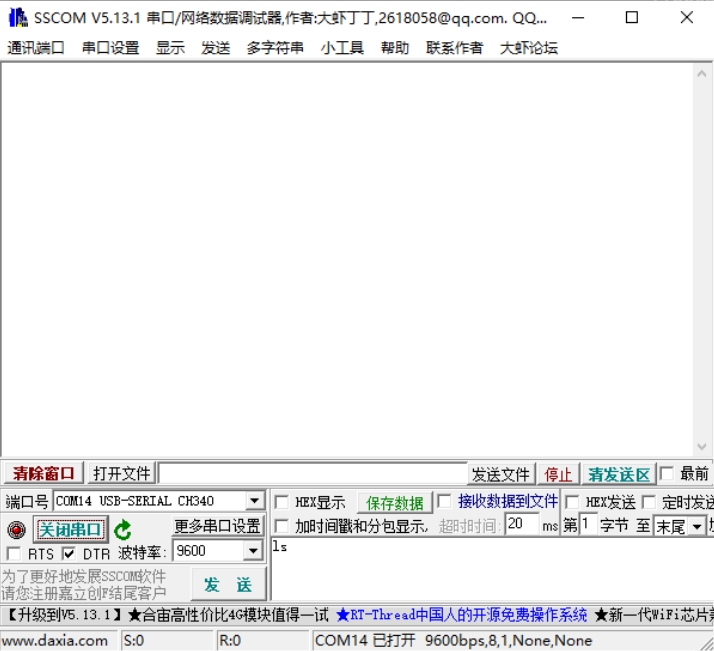
¶ UART3 verification
- As shown in the figure below, the USB to TTL module is connected to the UART3 terminal:
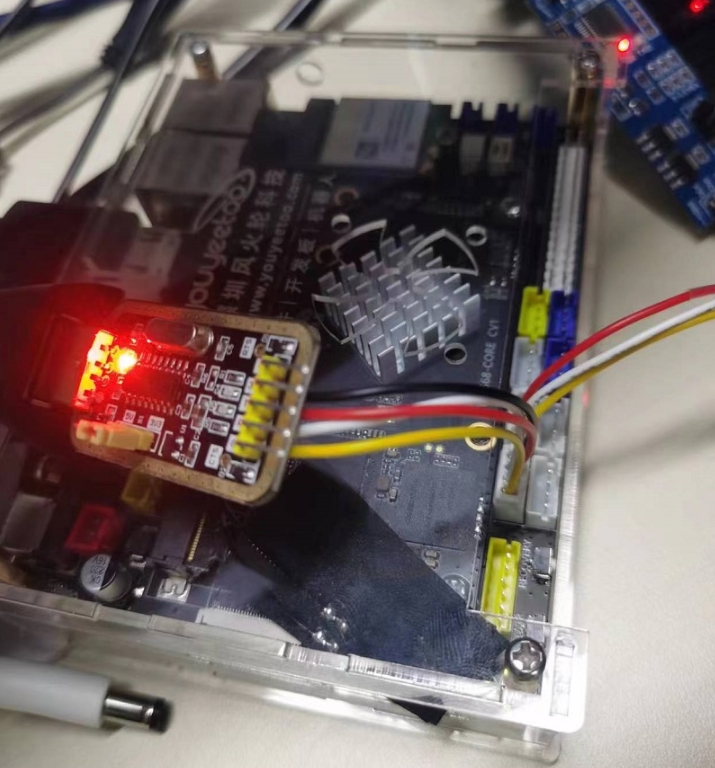
- Device file for serial port 3:/dev/ttyS3
- Output the following command in debugging the serial port and check it in the SSCOM tool (note that the baud rate of the serial port is 9600):
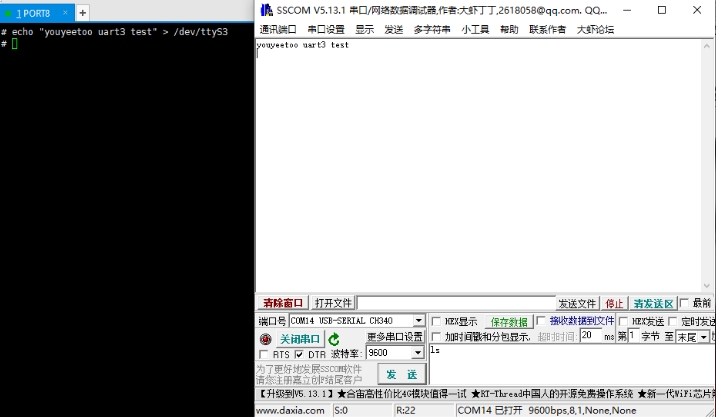
¶ UART4 verification
- As shown in the figure below, the USB to TTL module is connected to the UART4 terminal:
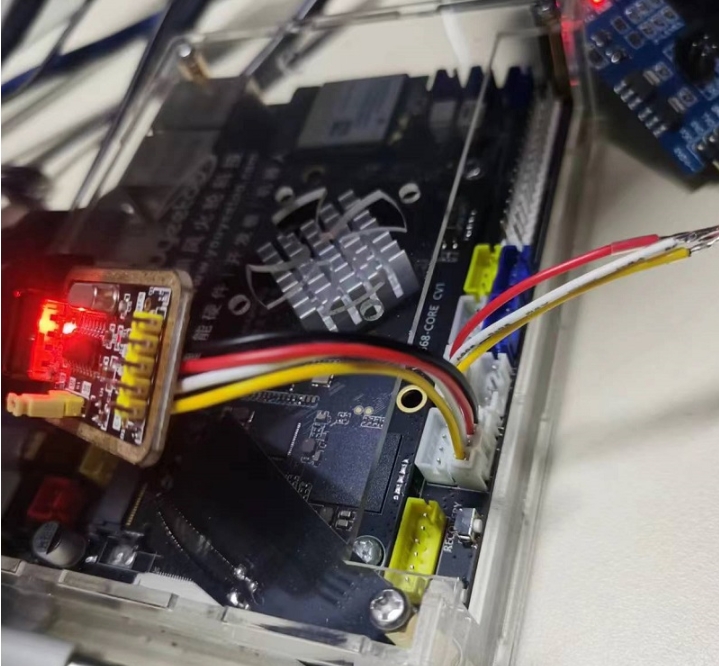
2. Device file for serial port 4:/dev/ttyS4
3. Output the following command in debugging the serial port and check it in the SSCOM tool (note that the baud rate of the serial port is 1500000):
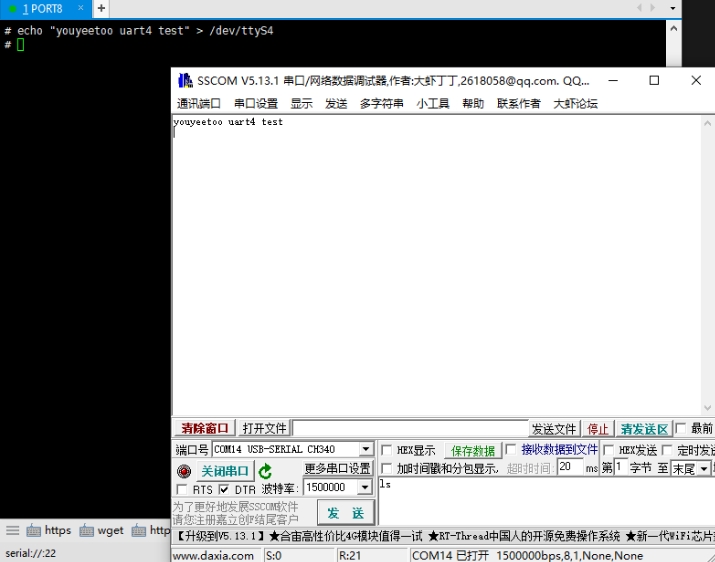
¶ UART8 verification
- As shown in the figure below, the USB to TTL module is connected to the UART8 terminal
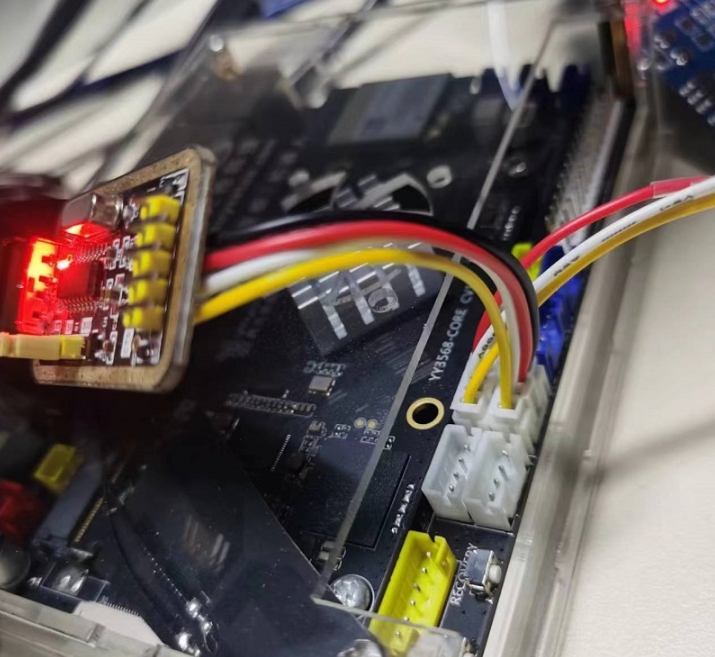
2. Device file for serial port 8:/dev/ttyS8
3. Output the following command in debugging the serial port and check it in the SSCOM tool (note that the baud rate of the serial port is 9600)
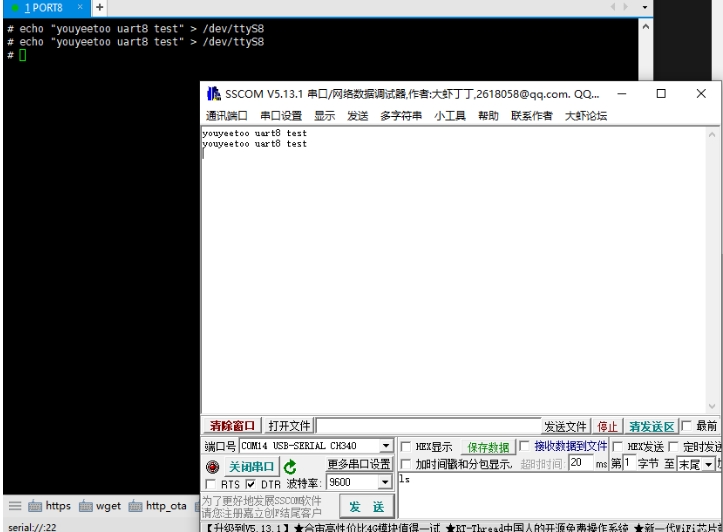
¶ I2C
- The YY3568 development board has two I2C interfaces, namely I2C1 and I2C5.
- We can use the powerful tool i2c tools to verify i2c. It is an open-source tool specifically designed for debugging i2c, which can obtain mounted devices and device addresses, as well as read and write I2C device registers.
- UART2 is the debugging serial port of the board, with a baud rate of 1500000. The tx pin of the serial module is connected to the rx pin of the development board, and the rx pin of the serial module is connected to the tx pin of the development board. Connect the GND of the serial module to the GND of the board (GND must be connected).
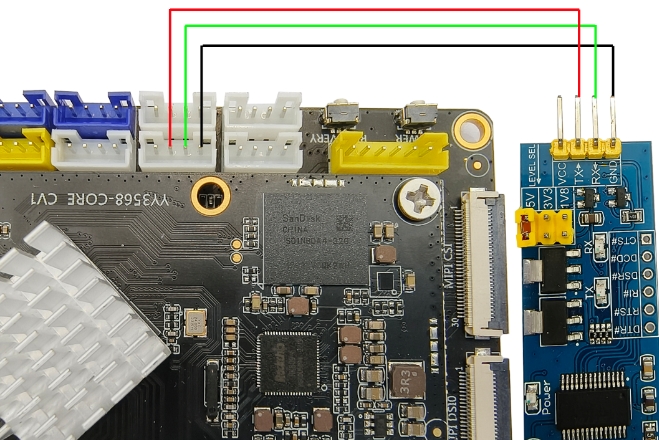
- The following tests were conducted using the MPU6050 sensor:
¶ I2C1 verification
- As shown in the figure below, the MPU6050 is connected to the I2C1 terminal:
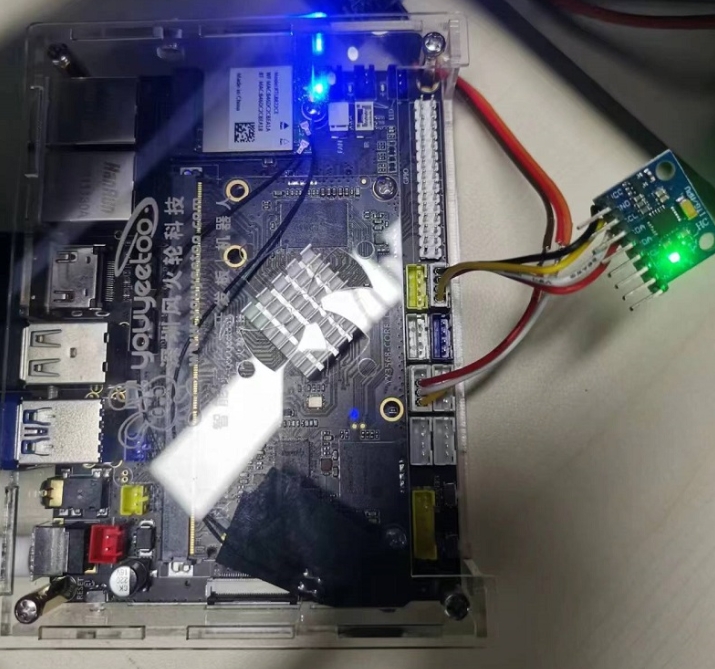
2. In debugging the serial port terminal, use "i2ctest - y 1" to scan the devices mounted on i2c1
3. In debugging the serial port terminal, use "i2cdump - f - y 1 0x68" to view the values of all registers in the device
4. In debugging the serial port terminal, use "i2cget - f - y 1 0x68 0x75" to view the value of the device's 0x75 register
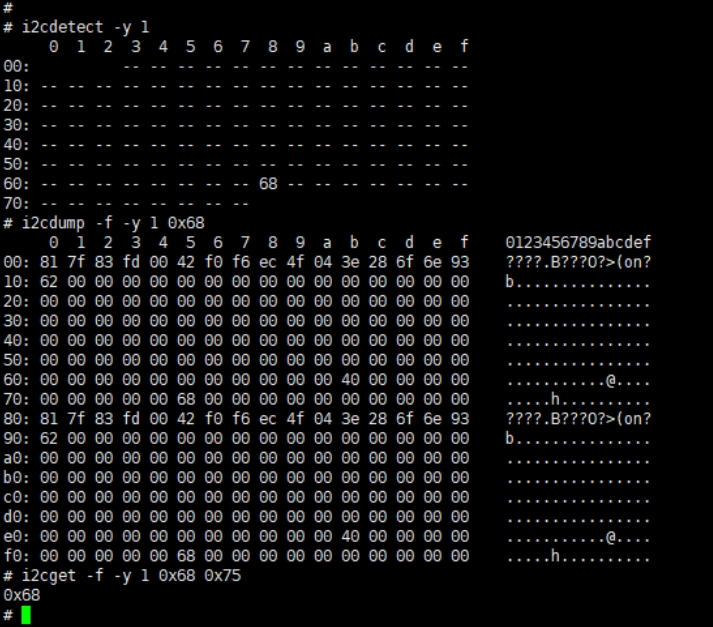
¶ I2C5 verification
- As shown in the figure below, the MPU6050 is connected to the I2C5 terminal:
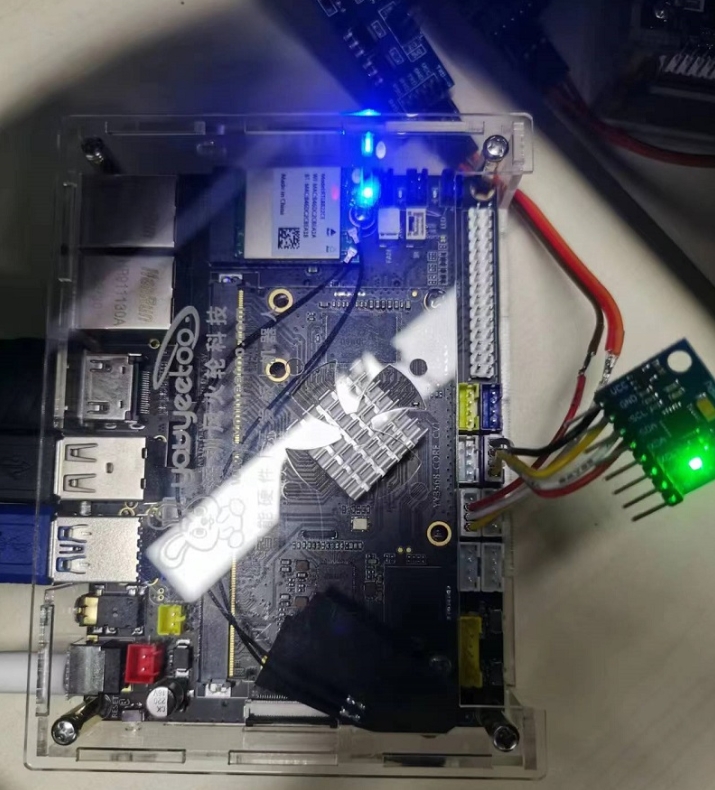
2. In debugging the serial port terminal, use "i2ctest - y 5" to scan the devices mounted on i2c1
3. In debugging the serial port terminal, use "i2cdump - f - y 5 0x68" to view the values of all registers in the device
4. In debugging the serial port terminal, use "i2cget - f - y 5 0x68 0x75" to view the value of the device's 0x75 register
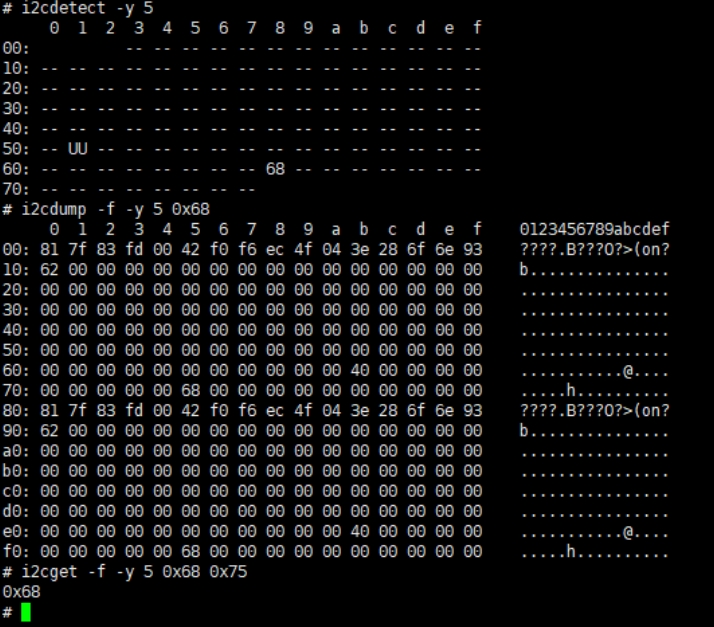
¶ CAN
CAN (Controller Area Network) is an efficient and reliable communication protocol used for real-time control and data exchange. It was originally developed by the German company BOSCH and has now become an international standard ISO 11898. The CAN bus adopts a multi master competitive bus structure, supporting multiple nodes to simultaneously send and receive data, with error detection and automatic retransmission functions, which can effectively improve the reliability and real-time performance of the system. CAN is widely used in fields such as automotive, industrial automation, and robotics, and is an indispensable part of modern electronic systems.
- The use of CAN
- Query the current network devices
ifconfig -a
- Set CAN
canconfig can0 down
canconfig can0 type can bitrate 1000000 dbitrate 3000000 on
canconfig can0 up
canconfig can0 start
//Or
canconfig can0 down
canconfig can0 type can bitrate 1000000 loopback on
canconfig can0 up
canconfig can0 start
- Can send and receive
cansend can0 -v -i 12 13 12 12
candump can0